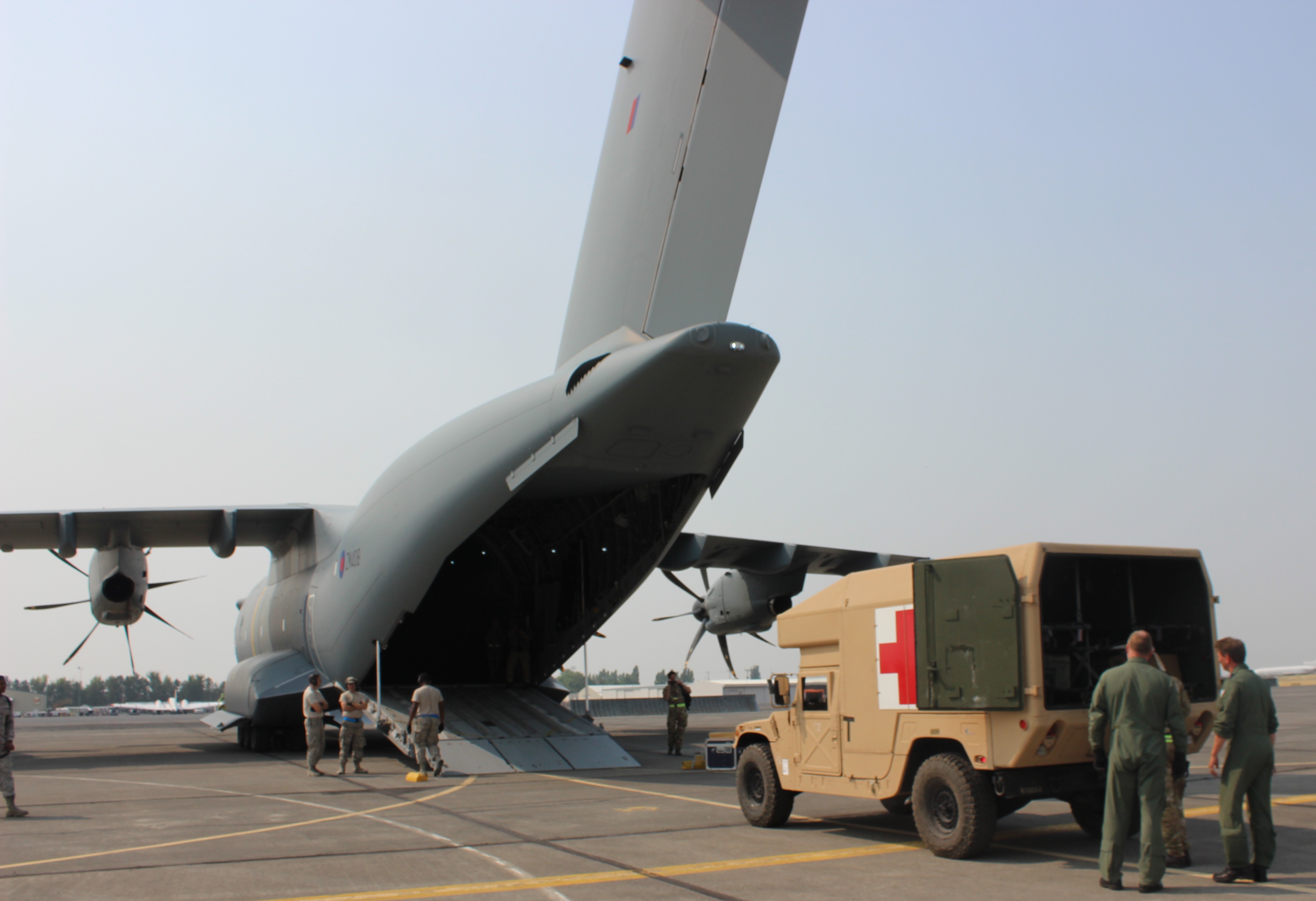
USAF and Royal Air Force airmen prepare to load a US Army vehicle into an RAF A-400M as part of Air Mobility Command's Mobility Guardian exercise Aug. 5, 2017, at Moses Lake International Airport in Washington state. Air Force Magazine photo by Brian Everstine.
MOSES LAKE, Wash.—For Air Mobility Command’s biggest exercise, Washington state’s Columbia Basin is an austere setting and the focal point of inserting airpower.
And the airmen of the 621st Contingency Response Wing are currently holding the airfield and moving aircraft, just like they would if they were in Syria or Iraq.
“In this environment here at Moses Lake, it is probably as close to Iraq as I can imagine,” said Col. Justin Niederer, the commander of the 821st Contingency Response Group, from Travis AFB, Calif. “The temperatures, the dust, … the coalition members on the ground here, and the flying aircraft. This is not very different from how we conduct operations.”
When the exercise kicked off last week, dozens of paratroopers from the Army’s 82nd Airborne Division jumped from C-130s and seized the austere airfield, actually a small commercial airport for the city of about 20,000 people nestled in the Columbia Basin in the middle of the state. After the airfield was “seized,” a small group of contingency response airmen flowed in to assess the airfield for operations, and then the rest came in to begin flight operations.
On Saturday when Air Force Magazine visited, four aircraft lined the flightline—two USAF C-17s, a Royal Australian Air Force C-17, and a Royal Air Force A-400M, which made its debut in a large-scale exercise at Mobility Guardian. Lines of US Army Strykers and Humvees waited to be loaded, along with soldiers, while the USAF contingent kept the flow going.
Mobility Guardian is Air Mobility Command’s largest-ever exercise, designed to work every aspect of the command’s mission. Members of the contingency response group worked with exercise planners, and used after-action reports from combat operations in Iraq and Syria, to make it as realistic as possible.
“Our airmen are getting access to and experience in a joint operation to a level they couldn’t get in any exercise we could build ourselves,” Niederer said.
Within the past couple years, airmen set up and ran operations at Qayyarah West airfield in Iraq, which was integral in retaking Mosul from ISIS. In Syria, airmen set up an airfield in Kobani for advances toward Raqqa.
Before the exercise, Niederer asked his airmen who had deployed and who had not, and the responses were about evenly split. This exercise puts those airmen on an even level to work together and learn from each other, he said.
Typically in a deployed scenario, an eight-man contingency response team will be the first in after a seizure group, such as the Army’s 82nd or Army Rangers, take the airfield. After giving the green light, about 130 airmen from across 23 different Air Force Specialty Codes get the airstrip running for operations. Every airmen does their job, but is also tasked with security to help the roughly 26 dedicated Security Forces airmen in case they are under attack.
It is a highly disciplined group that has been fighting as intended during Operation Inherent Resolve and is right-sized to work with special operations troops and other small kinetic groups to get airpower closer to where it is needed, Niederer said.